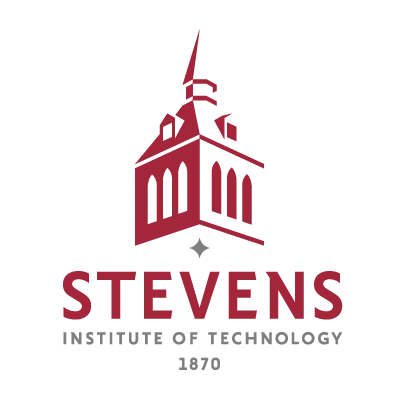Massive Open Online Courses (MOOCs) Are No Match for an Online M.S. in Computer Science

In 2011, two Stanford University professors launched a first-of-its-kind free online course in artificial intelligence. The response was extraordinary; more than 58,000 learners enrolled within the first month. Other institutions soon followed suit, and before long, these courses had acquired a distinctive moniker: Massive Open Online Courses, or MOOCs for short.
Observers dubbed 2012 “the year of the MOOC,” with one MOOC provider approaching the two million student mark. Then momentum stalled to the extent that Inside Higher Ed proclaimed the death of MOOCs in 2017.
The COVID-19 pandemic brought MOOCs back to life. In response to lockdowns and social distancing measures, universities and colleges worldwide embraced online learning tools and platforms, leading to a proliferation of virtual classrooms, webinars and digital resources. This paradigm shift created new opportunities for online students seeking a university degree.
The Promise of MOOCs
MOOCs aim to democratize education by breaking down multiple barriers and providing access to high-quality content from renowned institutions to anyone with an internet connection. This educational model captivated educators and learners alike.
MOOCs boast many appealing attributes, including:
- Accessibility: Anyone with access to the internet can participate in a MOOC, eliminating geographical and financial barriers.
- Affordability: MOOCs promised to offer free enrollment, making high-quality education available to those who cannot afford tuition fees.
- Flexibility: Learners can study from anywhere, at any time, allowing them to balance education with work or family commitments.
- Scalability: MOOCs are designed to be massive, which means vast numbers of students can take the same course, as opposed to the limited seats available in traditional programs.
Challenges quickly emerged. MOOCs caught on primarily with affluent students, widening a learning gulf they were intended to narrow. Additionally, the lack of student-instructor interaction resulted in weak student engagement and high dropout rates. In 2014, MOOC completion rates hovered around 7.5%.
Even so, MOOC advocates felt that the potential for MOOCs to transform education outweighed their challenges, which they hoped to resolve in the long run.
The Decline of MOOCs
Despite the initial hype, early issues persisted, and overall, MOOCs fell short of their purported mission of transforming education. While all MOOC content, assignments and certificates were initially free, providers soon moved certificates and graded assignments behind a paywall, excluding those who could not afford tertiary education. For-fee MOOCs chiefly attracted professional learners taking courses to advance their careers.
Researchers tested various student interventions targeted at improving MOOC completion rates. Strategies included “plan-making” interventions that prompted students to describe when and how they would complete the required coursework for the entire course. While this strategy slightly increased students’ engagement during the first few weeks of a course, the benefits soon dissipated.
Another intervention focused on “value-relevance” - asking students to indicate important values and write about how taking the course reflects and reinforces what is most important to them. Overall, these strategies had little to no effect. Students still typically stop taking MOOC courses after their first year.
The value of MOOC credentials also drew scrutiny. In many instances, MOOC students receive a completion certificate from the instructor rather than from an accredited institution.
The Status of MOOCs Today
A decade after their introduction, various for-profit companies still actively create MOOCs. MOOCs typically fall into three categories:
- Free introductory-level courses available to a massive global audience: These courses align with the initial goal of MOOCs: to make fundamental knowledge and skills available to anyone with an internet connection. Open enrollment allows thousands or even millions of learners to participate simultaneously. These courses typically do not offer formal certifications or credits.
- MOOCs supporting alternative credentials: Some MOOC providers collaborate with industry partners to offer specialized programs that lead to alternative credentials such as nano degrees, MicroMasters or certificates of completion. These MOOCs provide learners with practical skills and knowledge relevant to specific industries or professions.
- MOOCs leading to a conventional degree: More universities and institutions have started offering MOOCs that lead to traditional degrees, such as the MSCS. Learners typically follow a structured curriculum, complete assignments and exams, and earn the same degree as on-campus students.
For Professional Growth, Massive Open Online Courses Cannot Replace the Online MSCS at Stevens
Are you looking to begin or advance your computer science career? You may be considering MOOC degree-granting or alternative credential programs. If so, it’s worth comparing the benefits of these options with online degree programs offered by institutions of higher learning, such as the Stevens Online M.S. in Computer Science.
Unlike MOOCs, the Stevens Online MSCS program allows you to a learn from and interact with our renowned faculty who are National Science Foundation (NSF) CAREER winners and researchers and consult for companies such as Microsoft, IBM, Google, Bell Labs and other top industry firms.
Also unlike MOOC courses, in the Stevens Online M.S. in Computer Science program, you have the opportunity to forge close ties with your fellow students because you will engage with them frequently - in class and online study groups - and over a long duration. These connections with your peers can add significantly to your professional network and benefit your life and career for years to come.
The Stevens Online MSCS program has a notable track record of preparing students for tech careers at companies such as Google and Meta, which can pay around $200,000. The Stevens Online MSCS degree also opens doors at companies beyond the tech sector, including Bank of America and JPMorgan Chase, both of which have employed Stevens MSCS alumni. While many people who have completed MOOCs believe that the experience had value, surveys of hiring managers state that while they view MOOCs positively, they still prefer hiring candidates holding traditional degrees. Indeed, 97% of Online MSCS graduates in the Stevens Class of 2021 accepted job offers within three months of graduating.
If you are interested in finding out more about the Stevens Online MSCS degree program, reach out to our admissions team today.

